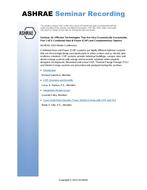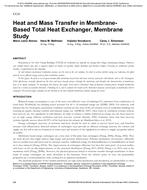The Passive House program is becoming increasingly well-known in North America. This program aims to produce a superiorthermal enclosure such that the space conditioning systems may be minimized, if not appreciably eliminated. Many Passive Housedesigns use double-stud or thick wall enclosures. By adding significant thicknesses of cavity insulation, this approach providesa high level of thermal performance (R-value). However, the decreased heat flow through these walls reduces drying and cantherefore place colder building components at risk of moisture damage. Constructing walls with exterior continuous insulationis a method that helps minimize these effects by warming critical layers, reducing potential condensation and moisture concerns.This paper reports on two ongoing projects to assess the durability of these assemblies by comparing a 2 × 10 wood-framedwall with nominal exterior insulation in Portland, Oregon to a 2 × 10 wood-framed wall with an interior insulated service cavityin Victoria, British Columbia. Both walls are instrumented to measure temperature and moisture profiles through the assembly,for both the north and south orientations. Historical data from previous research programs will be discussed and compared tomeasurement data from the current ongoing project. The threshold of performance for these assemblies will be discussed alongwith solutions to address potential concerns. Analysis of preliminary data shows that it is consistent with past research, andsupports the conclusion that exterior insulation can improve durability relative to double-stud walls.
Citation: Thermal Performance of Exterior Envelopes of Whole Buildings XIII, Conference Papers
Product Details
- Published:
- 2016
- Number of Pages:
- 11
- Units of Measure:
- Dual
- File Size:
- 1 file , 6.8 MB
- Product Code(s):
- D-BldgConf16-60


